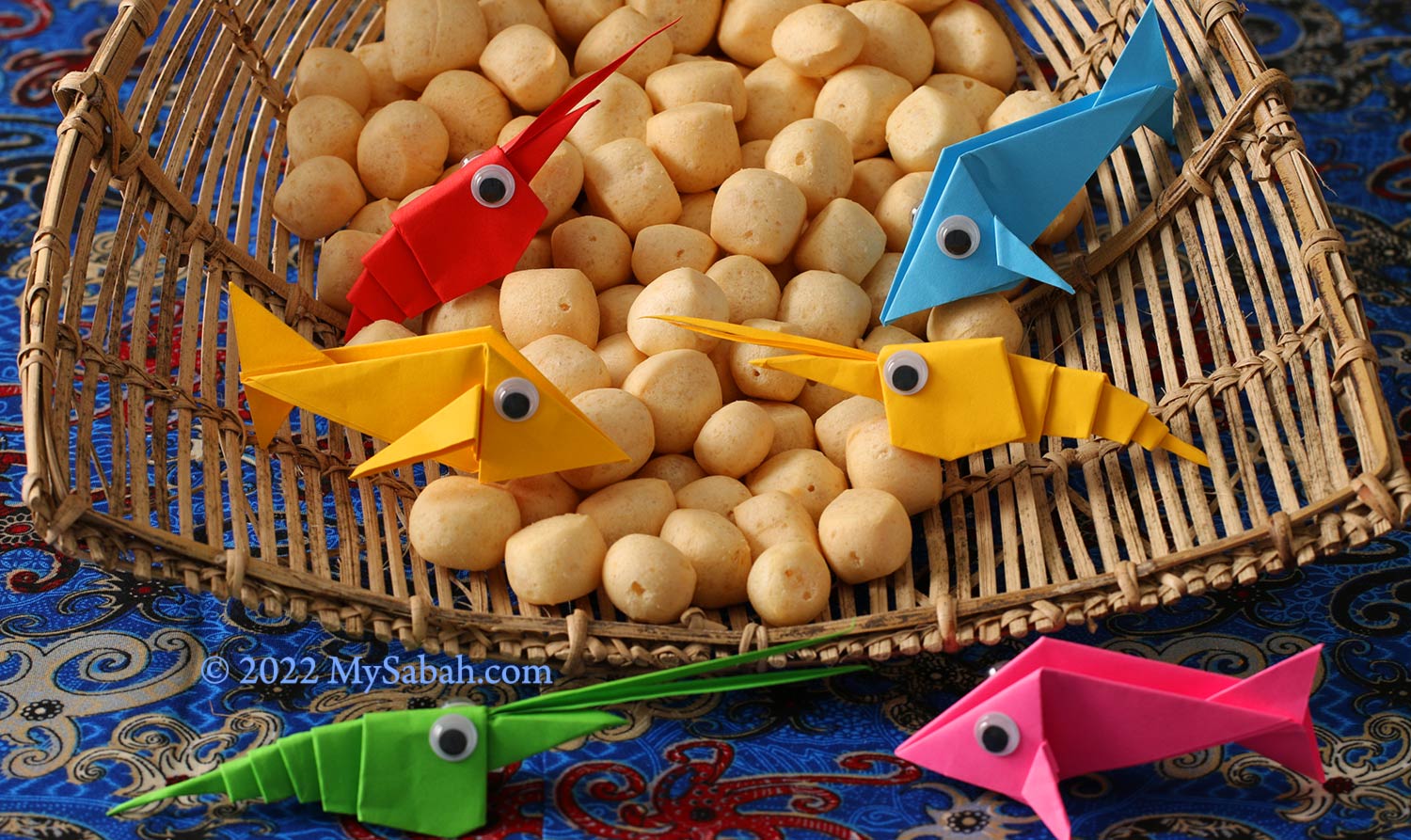Sabah is abundant in seafood, so many that we make crackers out of them. In the local market of Sabah, you would see piles of packaged yellowish and round-shaped snacks for sale. It’s Keropok Amplang (or Amplang), the most popular cracker of Sabah and a crunchy and savory snack made of seafood.
In contrast to potato chips, which are packed in colourful bags bloated with air, Amplang is a “low-profile” snack sealed tightly in clear plastic bag. Potato chips (or crisps) is a junk food that only makes you thirsty, Amplang can be eaten as a complement food. You can dip Amplang in tomato sauce for richer taste. That reminds me of fish & chips, but Amplang is a “fish in chips” instead.
Most Amplang is made from the flesh of fish, prawn or squid, mixed with tapioca flour, starch, garlic, egg, sugar and salt (spice and MSG would be added). The mixture is then deep-fried in small pieces until it expands and turns crunchy.
Tawau in East Coast of Sabah is famous for producing the best Amplang in Sabah, so people think Amplang is a Sabah food. In fact, Amplang is first made in Samarinda, the capital city of East Kalimantan (Indonesian territory on Borneo Island).
The traditional Amplang is made of freshwater fishes such as ikan pipih or ikan belida (Species: Chitala lopis). As the population of river fishes is declining, they are replaced by ocean fishes. The most common choice is Ikan Tenggiri (or Wahoo Fish, Species: Acanthocybium solandri), for its high quality flesh. Gabus (Striped snakehead) and Spanish mackerel are also used.
The original Amplang is fish flavour, but now you can find other flavours such as prawn, curry squid (sotong kari), sweet squid and cheese, and each has its own fans. I personally like curry squid and prawn which have stronger aroma.
Cheese Amplang tastes exactly like cheese ball crackers that melt in your mouth. Cheese amplang is double the price of fish amplang and it’s soft, taste great but not to my liking. Crab and seaweed flavours are available in Kalimantan, but I haven’t seen one in Sabah market.
Amplang from Tawau is also available in other parts of Sabah. Other fish amplang might contain less seafood and taste starchy. Anyway, some sellers allow you to sample it before buying. A small pack of fish Amplang costs about RM6 or RM7.
The more I look at Amplang, the more it looks like marshmallow, though they are totally different snacks. Anyway, in my heart, Amplang is always the “Marshmallow of the East”.
Photos taken in Sabah, Malaysia Borneo
